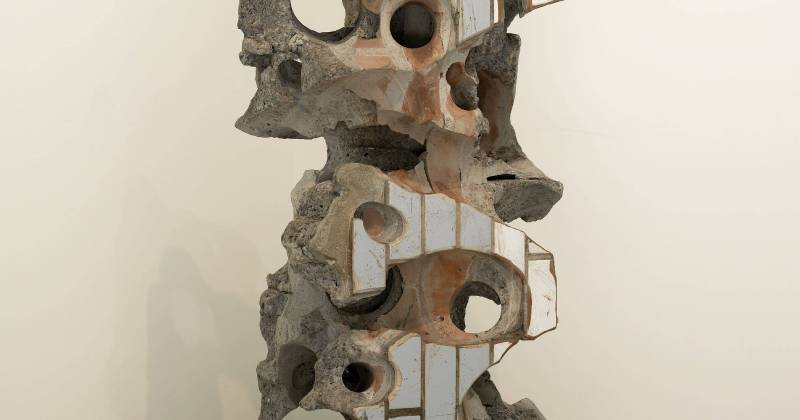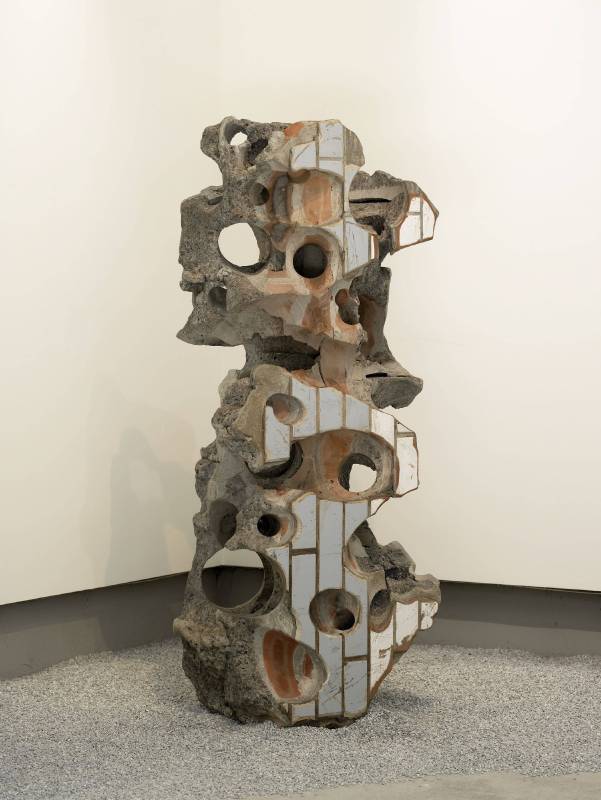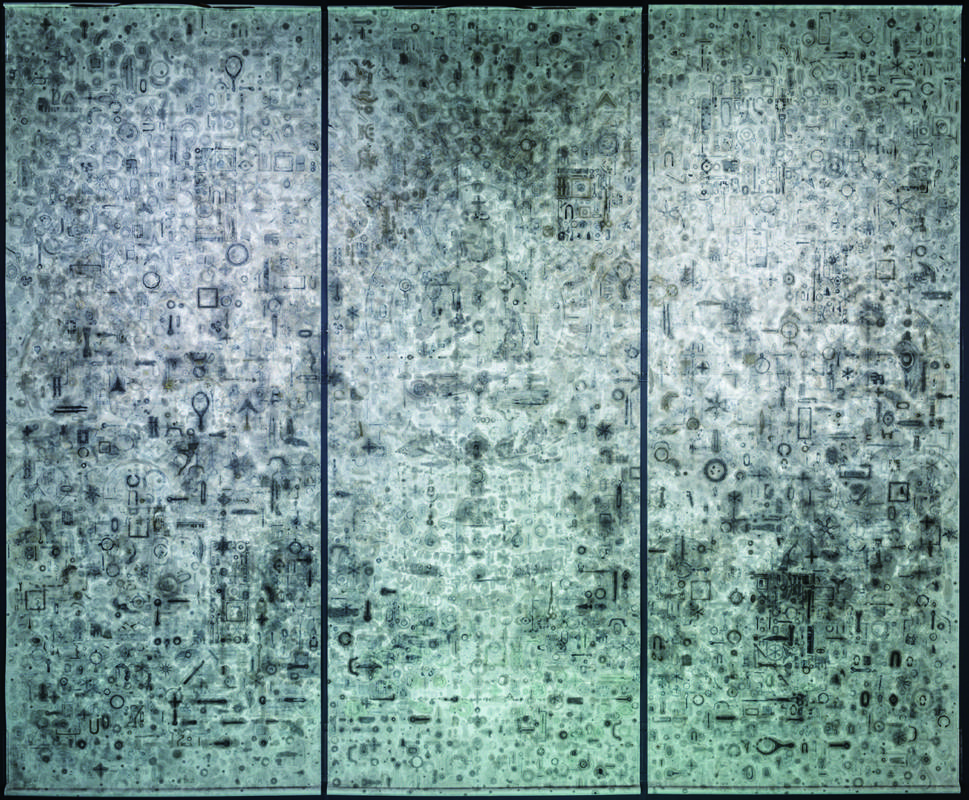安卓藝術
【 2019 香港巴塞爾藝術展|展位 3C33 】史金淞個展

-
展期
日期:2019-03-27 ~ 2019-03-31
-
地點
香港會議展覽中心(香港灣仔博覽道1號)
-
參展藝術家
史金淞
-
安卓藝術參展2019香港巴塞爾藝術展
Insights | Booth 3C33
香港會議展覽中心
預展|2019年3月27- 28日
公眾開放|2019年3月29-31日
安卓藝術將於2019香港巴塞爾藝術博覽會推出中國藝術家史金淞的個展「一切坚固的都烟消云散了」。展會將於2019年3月29至31日在香港會議展覽中心舉行,預展從3月27日展開,我們誠摯邀請您的蒞臨。
「一切坚固的都烟消云散了」的個展名稱取自馬克思《共產黨宣言》語錄,正如策展人廖廖所言,若從原文語境中抽離,這句話可能是今日這個時代的最佳的注腳,廖廖提到:「互聯網、全球化、消費主義、人工智慧潮水般洶湧而至,使得今天的權力結構、知識體系、傳播方式、生活方式……都發生了根本的改變,以往我們認為堅不可摧的信仰、權力、文化、甚至體制,逐一煙消雲散。此種改變不是以暴力革命的方式,而是以一種潛移默化但勢不可擋的方式吞沒了我們。……史金淞以『個體身份』去體驗時代的變遷,不斷地嘗試用作品來剖析、消解、重建新時代的生產方式、權力結構、知識場域。以此來完成一種「個人的公共性」,這是史金淞獨特的創作思維與方法論。」
展出作品《華山計畫》圍繞著充滿文化象徵意義的名嶽華山發展而成,藝術家「偽造」了許多被磨損的生活用品,創造出一系列人們日常生活的痕跡,探索人在既定的文化秩序與價值體系中的生存模式,進而質疑現行的文化氛圍、文化價值對於人的塑造與異化。而藉由「燃燒」探討文明變遷的《1200度》則延續了史金淞貫用的焚燒與碳化手法,通過1200度這個促成了青銅時代之「人類文明的臨界點」,消解了物質在原有文化系統中的意義,隱含著破壞與毀滅、潔淨與重生的意味。《金蟬脫殼》一作指向「存在」的探討,史金淞將瓜果、玩具各式雜物放在電解銅溶酸裡,物品在被溶解的同時留下了一張銅的外殼。作品一方面呈現物質消失與重生的臨界點的邊緣狀態,另一方面,藉由實體消解、面具存留的形式,讓我們直視今日虛擬時空中,內在與表層、實體與面具的關係。這些物件深具文人氣質,卻缺乏傳統文玩被賦予的種種道德與文化象徵,同時消除了傳統文玩的文化身份與階層等級的標籤,探討當文化身份與階層標籤被模糊化之後,我們如何定義個人的存在。
同樣在解構方法中重新建構出傳統的還有本次展出的三聯作《經變圖》和《千創園》,《經變圖》以莫高窟的《藥師經變圖》為原型,用茶水為墨,將日常物件的輪廓或局部印染於宣紙上,在傳統水墨的觀賞中隱約顯現菩薩的意象,以破壞性的解構方式渲染出宗教畫的莊嚴與神聖,對應著藝術家在《千創園》作品對於工作室殘垣的再創造,也實踐史金淞以「解構」或「破壞」的方式讓事物的表像與幻象煙消雲散,暴露出內在的本質真相。在藝術家看來,也唯有如此,才能直面、剖析這個巨變的時代,避免自身成為煙消雲散的一部分。
關於史金淞
史金淞,1969出生於湖北當陽,現生活於北京和武漢。主要創作包括有雕塑裝置、繪畫和現場體驗性的戲劇表演,通過這些藝術形式,他冀圖表現對短暫日常生活、物質的非永久性的關注,並透過它們暗示的方式找到救贖。他的創作既參考中國傳統與神話,也同時暗藏著試圖改善一個新的潛在系統價值的意圖。2010 年,史金淞先後獲得亞洲藝術論壇獎提名和瑞信今日藝術獎提名。
Mind Set Art Center
at Art Basel in Hong Kong 2019
INSIGHTS|Booth 3C33
Venue| Hong Kong Convention and Exhibition Centre
Preview|27 - 28 March 2019
Public Days|29 - 31 March 2019
Mind Set Art Center is honored to present the works of Chinese artist Shi Jinsong at Hong Kong Art Basel 2019. From March 29th to 31st, the grand art fair will be held at Hong Kong Convention And Exhibition Centre. The preview will start from March 27th. You are cordially invited to this event.
The title “All That Is Solid Melts into Air” comes from a quotation in Karl Marx's The Communist Manifesto. As the curator Liao Liao pointed out, leaving aside the context of the source text, this line is likely the most fitting footnote for today's great era. He wrote, “With the internet, globalization, consumerism, and artificial intelligence sweeping across the globe, the power structure has radically changed—the system of knowledge, the mode of communication, and the way of life. The solids we believe today, let it be faith, power, culture, or even the institution, will one by one vanish into thin air. This change is not the result of a bloodshed revolution, but an imperceptible yet unstoppable engulfment that takes us over…Shi Jinsong experiences the vicissitudes of time from an ‘individual identity’, in which he constantly attempts to analyze, digest and rebuild the mode of production, power structure and knowledge field of the new era. Shi's unique creative thinking and methodology completes a form of individual's publicness. By means of ‘violent destruction’ such as burning, hitting, tearing, grinding, and chemical reactions, Shi makes the appearance and illusion of objects disappear to reveal the inner truth.”
The exhibited Hua Shan Project refers to the famous Hua Shan, a cultural significant mountain in China. The artist “falsified" many worn-out articles of daily use, creating traces of wear and tear. In this era of constant melting into air, Hua Shan Project is a reminder of what we are facing—how power determines significance and how it affects people's behavior and life. Probing into the transition of civilization, 1200°C was created with incineration and carbonization, which are common art practices used by Shi. The piece was created by exposing objects to 1200 degrees Celsius—the temperature that gave birth to the Bronze Age. The significance of the objects in their original cultural systems are thus dissolved, implying destruction, cleansing and reconstruction. A Quick Change points to the quest of "existence." Shi placed fruits and trinkets in an electrolytic copper solution, and when the objects dissolved, they left behind copper shells. The work presents the edge of the critical point in between material disappearance and rebirth. On the other hand, the artist makes the physical objects disappear and leaves behind their hollowed shell, urging us to look at the relations between the inner core and the surface, the physical entity and the masked facade in today's virtual space.
Under the same concept of deconstruction, the exhibited triptych Jingbian Figure and Qian Chuang Garden also reconstructed the tradition. Based on the reference of Bhaisajyaguru Jingbian Painting found in Dunhuang, Shi created imprints of everyday life objects by dipping them in tea that substituted ink and leaving marks on calligraphy paper. The image of buddha subtly appeared in the appreciation of traditional ink painting, rendering a solemn atmosphere of religious painting via the deconstructive approach. As for Qian Chuang Garden, the reconstruction of the torn-down studio, it also practiced the method of deconstruction and destruction to break the outer illusion and expose the inner essence of truth. From the artist's perspective, this is the only way to face and dissect this era of great change and save oneself from becoming a part that melts into air.
About Shi Jinsong
Born in China in 1969, Shi Jinsong currently works and lives in Wuhan and Beijing. He studied at Hubei Academy of Fine Arts in China where he majored in sculpture and mastered an array of traditional styles and techniques. His practice includes sculpture, installation, painting, and some experimental acting performance. Through various art forms, he places hopes and cares on transience and object mortality in our daily life; meanwhile, he finds a path of redemption by their implications. Shi’s works consist of reference to ancient Chinese mythology and folklore, simultaneously showing an attempt to improve the value of new potential system. Shi has shown work internationally in many institutions including the Shanghai Duolun Museum of Modern Art, Kunstmuseum Bern in Switzerland, and Centre Pompidou in Paris.
推薦展覽
view all安卓藝術
【「相會於生命之始」伊萬・德・莫伊沙】Gathering at the Beginning of Life: Ioan De Moisa
日期:2024-08-09 ~ 2024-09-12|台灣,台北市

